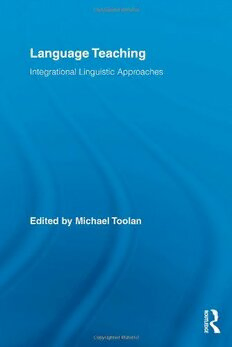
Language Teaching: Integrational Linguistic Approaches (Routledge Advances in Communication and Linguistic Theory) PDF
191 Pages·2008·3.977 MB·
Most books are stored in the elastic cloud where traffic is expensive. For this reason, we have a limit on daily download.
Preview Language Teaching: Integrational Linguistic Approaches (Routledge Advances in Communication and Linguistic Theory)
Description:
This book demonstrates the relevance of an integrational linguistic perspective to a practical, real-world need, namely the learning of languages. Integrational linguistics’ shunning of both realist and structuralist theories of language, its commitment to an unwavering attention to the perspective of the language user, and its adherence to a semiology in which signs are the situated products of interactants interpretive behaviour, mean that it radically reconceptualizes language learning and language teaching. Detractors have implied that IL is so ‘philosophical’ or ‘theoretical’ an exercise that it has no useful bearing on the practical problems of language learning. These papers refute that misconception by demonstrating how an IL stance can help disentangle the conflicting considerations and contradictory assumptions that arise in a host of language teaching situations: first, second- and foreign-language classrooms in a diversity of settings (including India, Australia, the United States, and Hong Kong), with different age-groups of students, whether the focus is on speech or writing, and in more informal settings.
See more
The list of books you might like
Most books are stored in the elastic cloud where traffic is expensive. For this reason, we have a limit on daily download.
